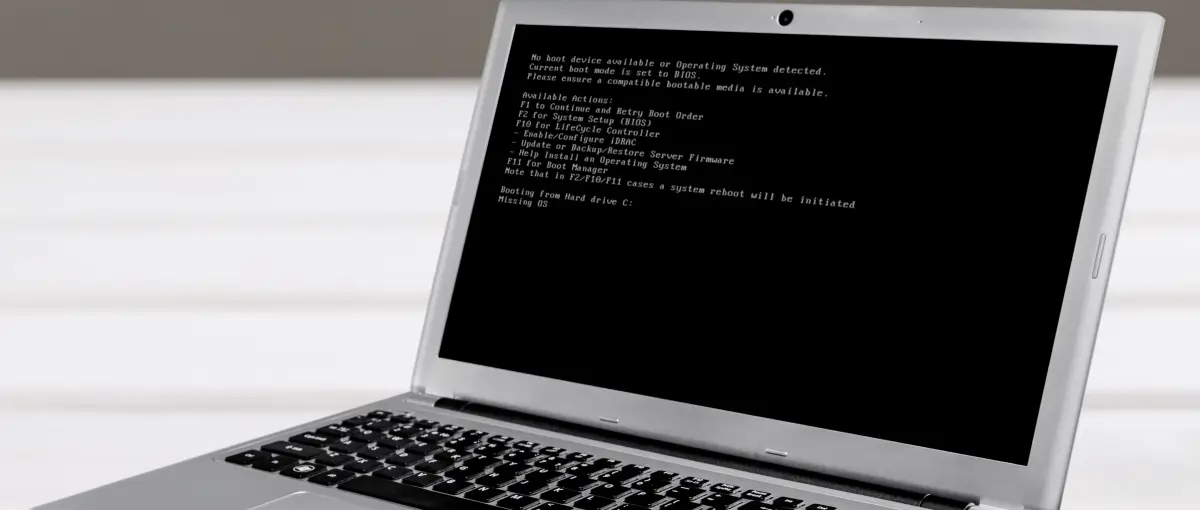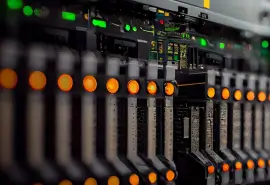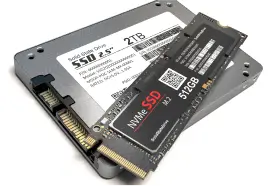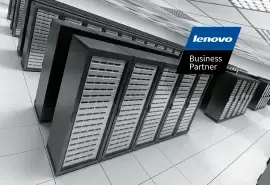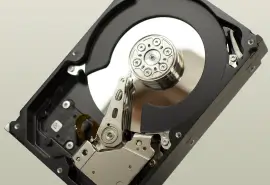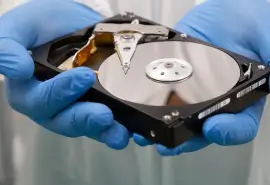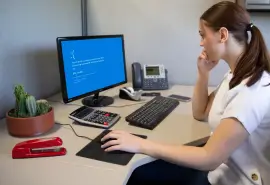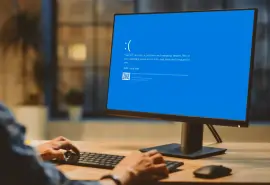The ‘no boot device found’ issue can be particularly troublesome and lock users out of their Windows OS environments. It isn’t a common issue, but if you’re reading this, it might have affected one of your PC systems. By following this step-by-step guide, you can fix this common issue in Dell and Lenovo systems.
Troubleshooting steps
To get you back up and running ASAP, we have created a list of troubleshooting steps you can try:
- Check your hardware and connected devices and peripherals.
- Check the BIOS boot sequence.
- Check BIOS boot options.
- Does your system have a usable built-in recovery mode?
- Run Windows recovery tools from an optical disk or USB media.
Now for a deeper look at the above solutions:
Step 1. Check Your Hardware, Connected Devices and Peripherals
Have you made any changes to your computer in the recent past that could have caused this 'no boot device identified' error to occur? It is possible that you may have opened up your personal computer and upgraded or added a component, which has caused your system to be unable to start up. When adding or upgrading components, it is all too simple to disrupt a functioning system.
Try removing all peripherals from the device, turn it off, and then back on. The reason for this is that it is easy to boot from an installation or recovery disk, should one be inserted before the system is powered on. However, corrupted media attached to a system could stop a normal boot sequence and precipitate the ‘no boot device found’ issue.
- You may be able to fix your system by reversing any recent hardware changes or upgrades you may have made. Next, try to restart the computer.
- Make sure to check all your connections are firm and fully seated. If your PC starts working again, you should be able to add your changes back. Keep in mind that you should check your PC after each update.
- If you still have an issue with your PC, try disconnecting all but the bare minimum of peripheral devices. A system can also get confused and show the ‘no boot device found’ error if it becomes overladen with peripherals.
Some systems may already have the BIOS boot sequence set. This means that before starting from the typical SSD or HDD fixed storage device holding the OS, it might try to boot from an external device. This can include devices like optical drives, USB drives, or even a network drive.
If you suspect this may be the issue, try the following:
make sure the right drive is first.
- Enter the BIOS menu - check how for your device.
- Make sure that Switch your regular Windows boot drive to the first option.
The boot sequence list may show disk drives by their maker code names or by what is on them. On Dell and Lenovo computers, you might see “Windows Boot Manager” as an option, which you can prioritize.
Step 2. Enter the BIOS UI
Your system may simply be trying to boot off a different drive than your the one with the Windows installation (usually C:/). If it is possible that’s the case, try the steps below:
- Restart your PC and enter the BIOS as follows:
- Dell system: repeatedly press F2 as soon as the Dell logo appears until you see the BIOS setup program is loading.
- Lenovo system: Press the F1 key 5–10 times immediately after pressing the power button or as soon as the Lenovo logo appears after a restart. Other keys that might invoke the BIOS depending on your motherboard/system, include the Escape key, Delete key, or F12. A functioning keyboard is necessary.
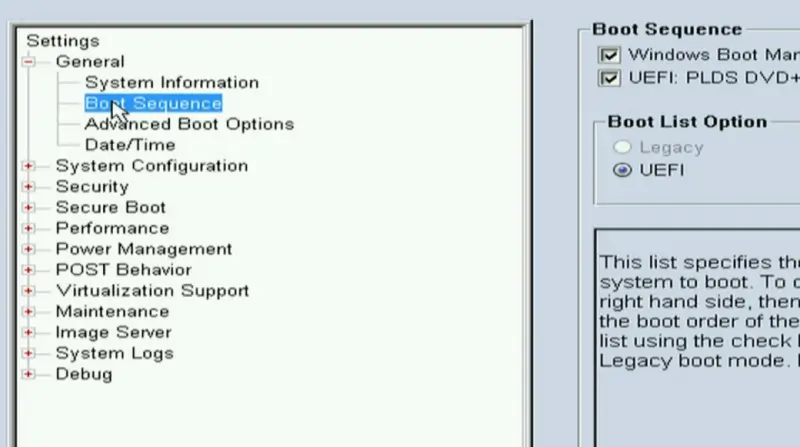
Step 3. Check BIOS Advanced Boot Options
You might not know whether your operating system was installed with UEFI or Legacy mode. Modern systems usually have the boot device set up as a UEFI device.
Check the BIOS UI to see if the UEFI or Legacy mode is selected.
- Select > Advanced Boot Options
- Check which one your system is currently set to
- Try switching between settings. Once you hit save, your system should restart, and boot up.
- If your system did not boot correctly, you must enter the BIOS again and revert back to the original Boot Option.
Secure Boot vs. Fast Boot
Another option in the BIOS that might help you get past the ‘no boot device found’ issue is the toggle for turning off fast boot or fast startup. In our experience, turning off fast boot only usually helps with older HDD-based systems, where the disk doesn’t have enough time to get up to spin speed to be ready for the system. We haven’t seen this issue often, or at all, with systems using SSD boot drives.
Try toggling on Secure Boot instead of Fast Boot. This might already be enabled. If not, select Fast Boot, again. Once you save this should restart your device.
Resetting Back To Default Settings
Lastly, if you have changed various BIOS options, have forgotten all the changes you have made, and think that perhaps you have made things worse, you can try and reset the BIOS to its default settings. The option is often called “Load BIOS defaults” - choose this option and confirm you want to save it and restart.
Step 4. Does your system have a usable built-in recovery mode?
Modern Windows 10 and 11 systems often have a built-in recovery mode, where a Windows recovery environment is stored on a hidden portion (partition) of your boot disk. Obviously, with the ‘no boot device found’ error, this might not be accessible, but it is worth a try as it can be a quick and neat solution if available.
- Dell systems may enter a specially prepared recovery mode by pressing F12 at startup and selecting the SupportAssist OS Recover option.
This utility allows you to back up your files before resetting your system. Important: This is in effect, restoring to the factory shipped state of your device. Please choose the backup option if you go down this route, to save your documents and files for post-recovery.
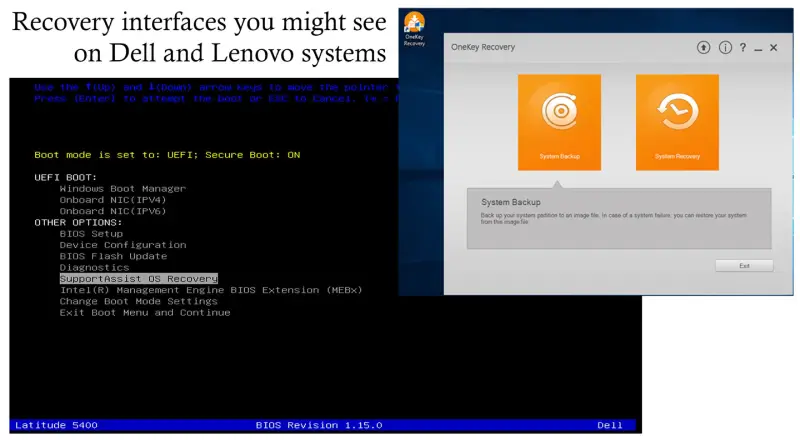
- Lenovo systems are often sold with the firm’s OneKey Recovery environment pre-configured.
This software is squirreled away on a hidden disk partition, so it may or may not be accessible with the issue we are trying to solve. To get to the OneKey Recovery mode, Lenovo asks users to either press the Novo button (upside-down U symbol) with a paperclip or choose Lenovo Rescue System from the F2 startup menu. Like Dell’s utility detailed above, Lenovo’s tool allows users to reset the PC to factory state. Thankfully, there is an option to ‘Keep My Files’ but people with a good existing set of backups may wish to ‘Remove Everything’.
Step 5. Run Windows recovery tools from an optical disk or USB
- Find or create system recovery media.
Seasoned PC users will have PC recovery media prepared before disaster hits. This media is bootable, so you can insert it, turn on the PC, and get to the recovery environment prepared by your PC vendor and/or Microsoft. If you forgot to create it, misplaced it, or your dog ate your recovery drive, Microsoft provides a full step-by-step guide to creating this useful tool for Windows 10 and 11 users, with specific alternative instructions for users of earlier OS versions. The process is pretty simple, but you must have access to another working PC, a spare USB drive, and a decent internet connection.
- Boot from Microsoft’s Windows recovery drive.
This recovery drive is stuffed with useful tools for repairing system startup, rolling back to restore points, or removing updates. It also offers more advanced options like adjusting UEFI settings, opening the command prompt, and using utilities for disk error checking and partition management.
Hit A Dead End? Your Boot Drive May Simply Have Failed
Above, we have provided an extensive number of troubleshooting tips and options to try and revive the ‘no boot device found’ error that is affecting your PC. However, there is a chance that all the attempts to eradicate common configuration errors could be in vain if the drive has simply become defective.
If you come to the conclusion that your boot HDD or SSD has died, then your focus will probably change to getting a new boot drive and recovering any precious data you stored on the old one.
Why ‘no boot device found’ Errors May Occur
Hard disks and SSDs have a lifespan that sometimes isn’t extremely long. The boot drive causing you issues might have simply become worn out. However, there are other root causes for errors as well. The most common causes for the boot drive becoming unusable or corrupt include installation issues, and electrical, liquid, heat, or physical damage.
Consult the experts to recover data from a faulty boot drive.
Those needing extra help with data recovery are in the right place. We have data recovery centers at over 200 locations around the globe. Call today for a free comprehensive diagnostics report on your broken media. Backed by our “No Data, No Recovery Fee” guarantee.

